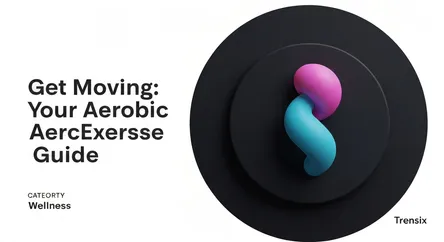Wellness
Get Moving: Your Aerobic Exercise Guide

Discover what aerobic exercise is, why it's trending, and its benefits. Find popular examples like walking, swimming, and cycling to boost your health.
What is it?
Aerobic exercise, commonly known as cardio, is any rhythmic activity that increases your heart rate and your body's oxygen use. The term "aerobic" means "with oxygen," highlighting that your breathing controls the amount of oxygen reaching your muscles to help them move and burn energy. It involves using large muscle groups repetitively for a sustained period. Popular examples range from low-impact activities like swimming and cycling to higher-impact options like running and dancing. These exercises are a fundamental component of physical fitness for people of all ages and abilities.
Why is it trending?
Aerobic exercise is consistently popular because of its accessibility and profound health benefits. Many forms, such as walking or jogging, require little to no special equipment and can be performed almost anywhere. As awareness of preventive healthcare grows, cardio is widely recommended by doctors to combat conditions like heart disease, obesity, and type 2 diabetes. Its effectiveness for weight management, combined with its positive impact on mental health, makes it a cornerstone of modern wellness routines embraced by millions worldwide for its simplicity and proven results.
How does it affect people?
Engaging in regular aerobic exercise significantly improves overall health. It strengthens the heart and lungs, making the cardiovascular system more efficient. This leads to benefits like lower blood pressure, improved circulation, and a reduced risk of chronic diseases. Physically, it helps with weight management by burning calories and can increase stamina and reduce fatigue. Mentally, aerobic exercise is a powerful mood elevator, known to reduce symptoms of anxiety and depression, promote relaxation, and improve sleep quality.